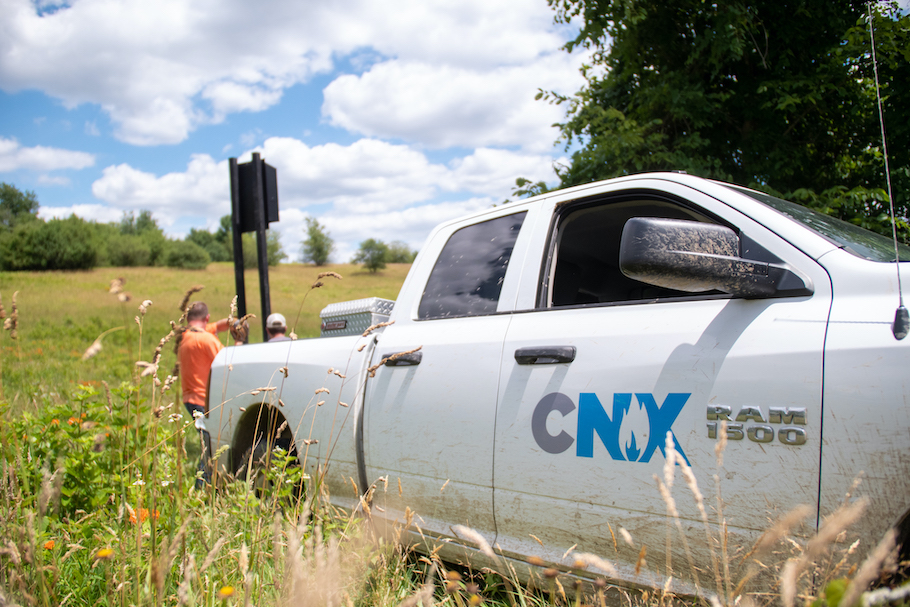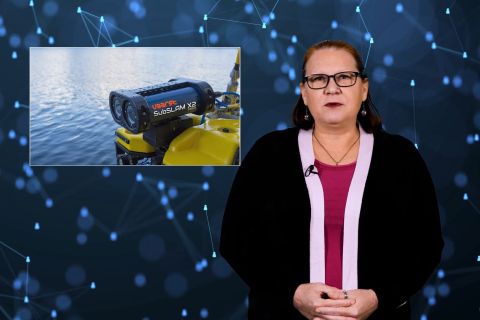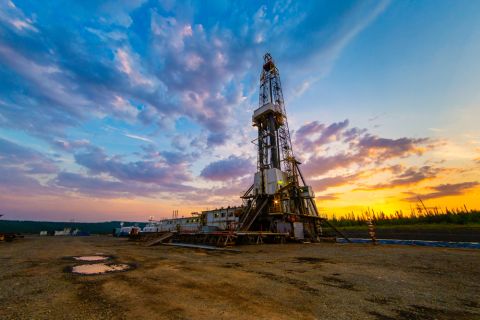Editor’s note: Some of the following interview responses were edited for clarity and meaning.
The oil and gas industry has moved well past the period of simply understanding and acknowledging the need for ESG endeavors in their operations and structure. The industry is now fully entrenched in the stages of not only implementing ESG efforts, but also setting achievable standards and establishing pathways to achieve those goals.
Whether it be to appease the sentiments of the investment community, compliance with regulations or simply pure altruism, the oil and gas industry is now at the point where ESG is a top priority rather than a box to be checked.
“You have to understand what ESG means to you as a company,” said Yemi Akinkugbe, chief excellence officer with CNX. “Then you have to understand the value that it brings to you as a company, to your stakeholders and to all of the employees in your company. Once you have that solid foundation, I think it creates a very clear path for any operation, for any company, to be successful as it relates to their ESG journey.”
Among the ESG leaders in the upstream operating industry have been CNX, Laredo Petroleum and Devon Energy. Each one has defined ambitious emission reductions goals to achieve over the next two decades.
Devon has set a net-zero GHG emissions reductions target for Scope 1 and Scope 2 emissions by 2050 and a goal to lower flaring intensity to .5% or lower by 2025, and eliminate routine flaring altogether by 2050.
Meanwhile, CNX aims to eliminate routine flaring by 2025 and reduce its total methane emissions as a percentage of natural gas production to less than .2% by 2025. Additionally, CNX is aiming for 12.5 mtCO2e/MBOE Scope 1 greenhouse-gas (GHG) intensity by 2025. CNX has seen a 90% reduction in Scope 1 and 2 CO2e emissions since 2011.
CNX’s ESG targets
CNX’s approach to implementing its ESG philosophy “is a reflection of our values,” Akinkugbe said. “Our ESG philosophy within CNX is tangible, impactful and local.”
With its environmental aspects, Akinkugbe said CNX “continues to push the envelope” on emissions reductions.
“In our corporate responsibility report we released last year [2021], we set a target that by 2022 we want to further reduce CO2 emissions in our Scope 1 and Scope 2 emissions by 90,000 metric tons,” he said. “By the end of 2025, our goal is to have reduced Scope 1 and Scope 2 [emissions] by more than 200,000 metric tons. The big question is, how do you achieve that?”
Akinkugbe explained that the company spends about $10 million per year on methane abatement while looking for creative ways in its operations to be more efficient.
“We are reducing not just the methane emissions, but also the CO2 signature of activity,” he said. “We are reducing consumption more on the heavier hydro requirements—we’re talking about different kinds of diesel and continuing to reduce [diesel usage] by looking for a much more creative way and efficient way of running our operations.”
Meanwhile, CNX has invested about $30 million into the communities in which it operates in the Appalachian Basin, with plans to invest another $130 million in the next five years.
“We’re looking at the health and welfare of children, the elderly and the feeble,” Akinkugbe said. “We’re looking at us now focusing on recidivism and criminal justice, focusing on education when it comes to water quality [as well as] technology [and] providing broadband to the localities in which we operate.”

Devon’s ESG objectives
Devon has established a number of environmental performance targets, with achievement goals set among the short and long term. The producer has set a net-zero GHG emissions target for Scope 1 and Scope 2 emissions by 2050, with a 50% reduction goal by 2030. Devon hopes to achieve a 65% reduction in the methane emissions intensity by 2030 and a .5% flaring intensity by 2025, completely eliminating the practice by 2030.
“When you think about net-zero 2050, that’s a long time away, and you need to take steps to get there,” said Garrett Jackson, Devon’s vice president of ESG and EHS. “So the first step we’re taking is reducing our emissions. We see a lot of focus on our GHG intensity, Scopes 1 and 2, and then also our methane intensity. Those are things we have spent a lot of time over the last several years working on, and we’re continuing to try to improve in those areas.”
Jackson said Devon is deploying different technologies and data to better understand its emissions, which helps the company create a “roadmap” for their employees, particularly field employees, to help reach their goals along the way.
“We recognize that we’re going to need advances in technology, whether that’s through carbon capture or some type of offset or market-based instrument to help us ultimately get to net zero,” he said.
Along with its environmental goals, Devon has placed a high priority on diversity, equity and inclusion hiring practices, ensuring that the company maintains a focus on its people, the communities in which it operates and its stakeholders.
“When you talk about having diverse backgrounds and perspectives in your employees, we want them to have equal opportunities, and we want everybody to have a fair chance and opportunity,” Jackson said. “ We want everybody to feel seen and heard and ultimately valued, and I think that’s important for a great company culture.”
Laredo’s ESG focuses
Laredo Petroleum, which operates exclusively in the Permian Basin, is expecting to achieve 12.5 mtCO2e/mboe Scope 1 GHG intensity, less than .20% methane emissions and zero routine flaring by 2025.
“We have a defined pathway of how we’re going to achieve that 12.5 metric tons of carbon dioxide equivalent per 1,000 boes produced,” said David Ferris, chief sustainability officer with Laredo. “We’re going to really focus on three areas. The first is mitigating venting and flaring. The second is replacing [pneumatic] devices, and the third is electrifying portions of our field operations to eliminate or mitigate emissions from combustion.”
In July 2021, Laredo completed its acquisition of Sabolo Energy. Sabolo’s operators were focused in the Permian Basin’s Howard County. The deal included 21,000 net acres, 100% of which was HBP. At the time of the transaction, Laredo CEO Jason Pigott said the company would be “maintaining our prior commitments to reducing greenhouse-gas intensity, methane emissions and eliminating routine flaring.”
Ferris discussed the challenges of taking another company’s assets and working to get it up to speed on Laredo’s environmental and emissions goals.
“We are investing money to upgrade those facilities to where they are up to our standards for sustainability and environmental performance,” he said. “We expect to see significant improvements on those operations as well as some of ours that needed some attention.”
Although companies like Laredo, CNX and Devon are well down the path of incorporating ESG practices in their everyday operations, other companies have yet to fully embrace ESG as a priority in their own operations.
So what advice would ESG leaders offer to those just starting out their journey?
“One of the first things we talk about is understanding what your stakeholders want,” Ferris said. “Who are your investors? Who are your stakeholders, and what are their top priorities? What reporting frameworks do they want? And then compare those frameworks to what you can do.”
Ferris stressed understanding your own capabilities as an organization, areas of strength and, in particular, the data and expertise the company possesses.
“That’s where you start, and build from there,” he said. “The key is understanding where to start, getting started and then continuing to build year over year from there. It’s finding the momentum, the motivation and the opportunity to get started, and it builds.”
Recommended Reading
TGS, SLB to Conduct Engagement Phase 5 in GoM
2024-02-05 - TGS and SLB’s seventh program within the joint venture involves the acquisition of 157 Outer Continental Shelf blocks.
2023-2025 Subsea Tieback Round-Up
2024-02-06 - Here's a look at subsea tieback projects across the globe. The first in a two-part series, this report highlights some of the subsea tiebacks scheduled to be online by 2025.
StimStixx, Hunting Titan Partner on Well Perforation, Acidizing
2024-02-07 - The strategic partnership between StimStixx Technologies and Hunting Titan will increase well treatments and reduce costs, the companies said.
Tech Trends: Autonomous Drone Aims to Disrupt Subsea Inspection
2024-01-30 - The partners in the project are working to usher in a new era of inspection efficiencies.
Drilling Tech Rides a Wave
2024-01-30 - Can new designs, automation and aerospace inspiration boost drilling results?





